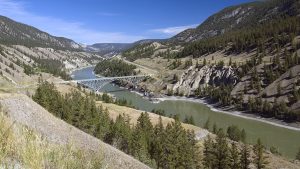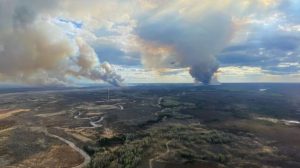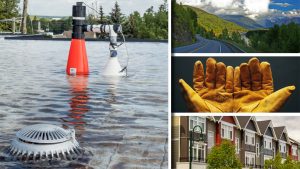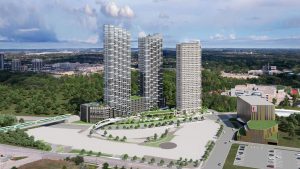A Vancouver engineer says there’s an increasing use of temporary structures — those without permanent foundations — in British Columbia and the rest of Western Canada.
"There are good reasons for the growing popularity of temporary structures," said Paul Tomei, principal of Bogdonov Pao Associates Ltd. (BPA), consulting structural engineers in Vancouver. "For one thing, temporary structures are economical and for another, many equipment suppliers are introducing new products that enable high-quality temporary buildings to be erected. They also extend the capabilities of existing equipment, allowing for bigger loads, longer spans, higher heights and greater wind-load capacities."
Tomei says the purpose of temporary structures is to facilitate access or to support temporary loads during construction.
Common examples of temporary structures are formwork, shoring, jacking systems, rigging, heavy lifts, suspended work platforms, access scaffolding and system scaffolding.
Some less common types are movie sets, sports venues and demolition projects that need temporary support.
Tomei says BPA is one of only three companies in B.C.’s Lower Mainland that specialize in temporary structures.
The company has two divisions, structural engineering and construction engineering services (CengS), which designs and builds temporary structures.
"Construction Engineering Services works with contractors and subcontractors on a project to provide engineering during the course of construction," Tomei said.
From the beginning of 2016 until early October, CengS had designed over 300 temporary structures for projects across North America.
Temporary structures in Western Canada designed by CengS include a shrink-wrapped scaffold structure for the temporary roof on Prairie Mall in Port Coquitlam, B.C., a suspended work platform for upgrades to the Buffalo River Bridge in the Northwest Territories and hoarding for repairs to the Winnipeg Blue Bombers’ Investors Group Field.
BPA also provided engineering services for overlay at most of the venues of the 2010 Vancouver Winter Olympic Games, including grandstands, the opening and closing ceremonies, light towers, access ramps, scoreboards and production and broadcast booths.
"The Olympics typically requires a great many temporary structures, because they’re an economical way to host sporting events," Tomei said.
The process of building temporary structures and the applicable design codes are different from permanent structures.
"The various design codes, CSA (Canadian Standards Association) standards, and WorkSafeBC occupational health and safety regulations allow some load reductions for temporary structures based on short-term duration of use," said Tomei.
The apparent simplicity of the structures notwithstanding, building temporary structures can still be tricky, he added.
"When you’re doing the design, you need to think through the process of how the temporary structure will be constructed," Tomei said. "The most important thing is to work with a contractor to come up with a good concept that is practical before proceeding with a detailed design."
Tomei says a contractor knows what his workers and his equipment can do better than anyone else.
"So you need to include them in the entire process to avoid a looks-good-on-paper design," he said. "What you want is a design that is common sense and workable."
Tomei says it is often possible for contractors to identify opportunities that help reduce costs and save time on project schedules.
"Most contractors have a bone yard filled with salvaged material or material left over from other jobs," he said.











Recent Comments
comments for this post are closed